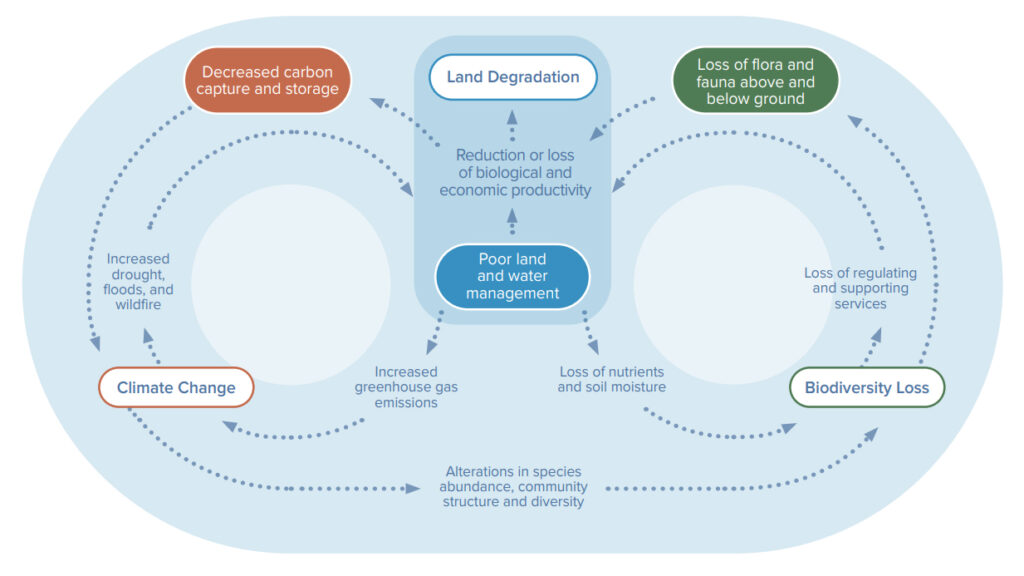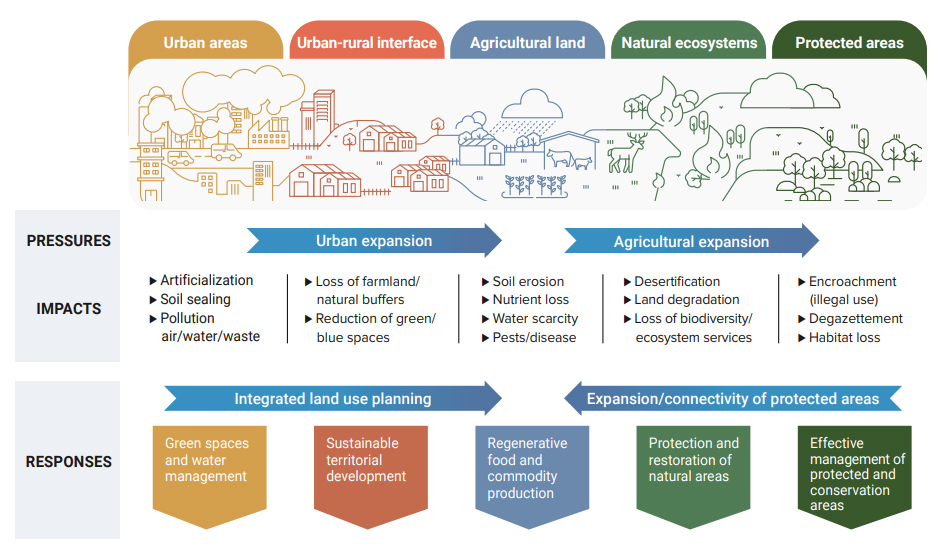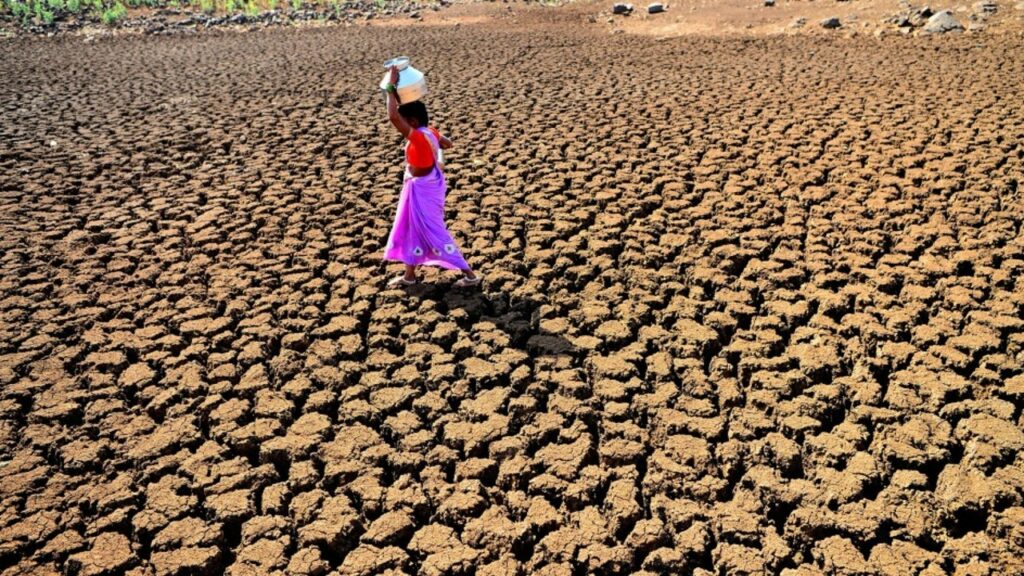A new United Nations (UN) report shows that agriculture, mining and logging have damaged more than half of the planet.
In a portrait of land degradation around the world, the report describes entire forests razed for timber or pasture; sensitive grasslands and wetlands lost to urban sprawl; and overexploited lands that have become deserts.
Humans have altered 70% of the Earth’s land from its natural state and degraded up to 40%. This threatens “many species on Earth, including our own,” the report warns.
If these trends continue, the experts foresee increasing disruptions to human health, food supply, migration and biodiversity loss caused by climate change, in what the authors call an “unprecedented confluence of crises.”
“The relationship between humans and the environment must change dramatically to avoid catastrophic tipping points where the exploitative power of humans is overwhelmed by the power of nature,” the report says, noting that half of humanity is already feeling the effects of land degradation.

Man vs. Man
The report, called Global Land Outlook 2, comes from the United Nations Convention to Combat Desertification and follows a landmark UN report in early April that called for “rapid and deep” emissions reductions to avoid the worst effects of global warming.
The authors stress that combating erosion of the world’s land makes good economic sense: More than half of the world’s economy, some $44 trillion a year, depends on nature.
At the same time, restoring land and protecting forests could curb the effects of poverty, hunger, conflict and disease. And that, in turn, could contribute to more than a third of the efforts needed to sequester carbon and limit global warming to 1.5°.
According to the report, industrial agriculture has played an excessive role. The cultivation of livestock, palm oil and soybean crops, in particular, has led to freshwater depletion, widespread deforestation and rampant extinction, backed by $700 billion in government subsidies each year that support unsustainable and polluting practices. Mention aside, tons of greenhouse gases each year.

Significant problems
Ibrahim Thiaw, Executive Secretary of the UN organization, said that for too long people have exploited the land, used its resources and discarded the rest without thinking, and pointed to his suit jacket: “This is fiber, this is cotton, this is land, this is water, this is carbon,” adding that humanity must abandon this approach and adopt a more sustainable management mentality.
The report warns that if nothing changes, by 2050 we can expect significant blows to crop yields, degradation of an additional tract of land the size of South America and loss of carbon locked up in poor soils and threatened peatlands.
On the other hand, committing to conservation and restoration of one-third of the world’s land would not only improve yields and carbon lock-in, but also avoid one-third of the predicted extinctions.
The authors use the term restoration to refer to sustainable land and water management, which includes practices such as reusing natural areas, protecting wetlands and waterways, prioritizing ecosystems in agriculture, and building green spaces in cities.
In addition, they pointed to a number of success stories, such as efforts to restore the Iberá wetlands in Argentina and preparing for dust storms in Kuwait. “It’s not complicated, it’s actually low-tech, accessible and achievable. That is, if humanity can muster the political will,” Thiaw emphasized.

To read the Global Land Outlook 2 report in pdf, click here




